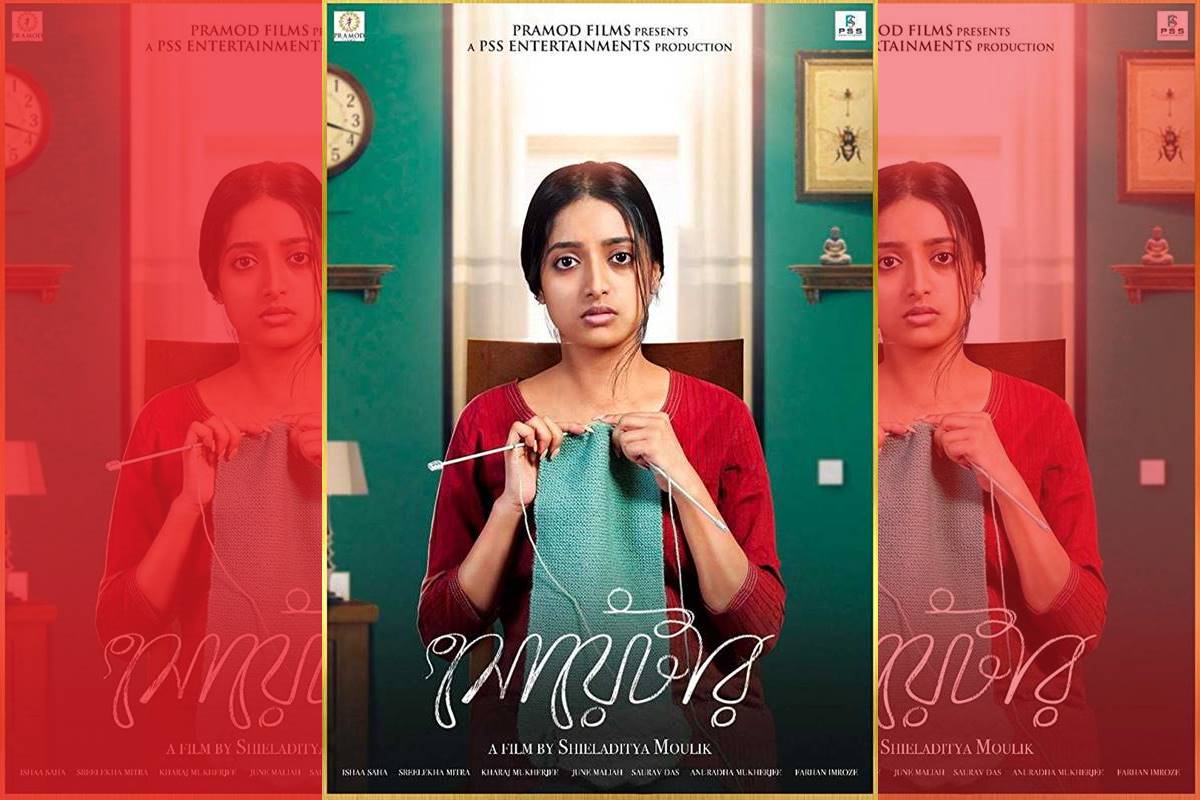Pratul Mukhopadhyay passes away at 82, Bengali music icon gone forever
Mukhopadhyay's powerful compositions like 'Ami Banglay Gan Gai' and 'Dinga Bhashao Sagore' are deeply etched in the hearts of his admirers.
From the recent Bengali film Sweater to the classic Kaagaz Ke Phool, the act of knitting has been used for plot development and also, to convey varied emotions in cinema

Bengali film Sweater (2019) poster
Knitting, it is assumed, is a woman’s craft. So, in Sheiladitya Moulik’s film Sweater, when Tuku, the leading lady, comments that she has never seen a man knit, she is unaware of the fact that men in Nepal and in the northern hills like Kalimpong, Kurseong and Darjeeling are experts and can even knit a pullover in 24 hours flat! The Sherpas are said to be very good at knitting; so contrary to common perception, it is not necessarily a feminine craft that keeps men out. The fact that men never complain about being kept out of knitting is a different matter. If and when they do, it is either a matter of choice as the man in this film does, or it is a necessity dictated by natural things like unforgiving winters. In this age of globalisation and online shopping, most urban women do not knit at all. So, the gender-divide, if there was any, has ceased to be.
In Sweater, Tuku is compelled to learn knitting because that is a condition put forth by her would-be-mother-in-law who brings lots of colourful knitting wool and needles and gives them to Tuku adding that she must learn to knit like her and then alone will she finalise her wedding to her only son. She also hands over a sweater she has knit herself as the standard Tuku must follow. No one, except Tuku’s younger sister, is shocked. Her parents, the marriage broker and Tuku herself do not find it an insulting condition placed by a woman they do not even know. Tuku does not know how to knit but her parents bluff their way and decide to do something about teaching Tuku. The deadline she is given is one month.
Advertisement
Off she goes to her aunt’s home in Siliguri to learn where knitting is taught to a group as a coping strategy to overcome depression. The aunt is shocked that any respectable family can even imagine placing such a humiliating condition for marriage. But Tuku herself, disgusted with her parents complaining about her being useless even in making a good cup of tea, begs her aunt to teach her how to knit. “I must be good at something,” she says with the sad face she forever wears as if she was born with that expression. Why does the older lady want a daughter-in-law who can knit like her? “Knitting is my comfort zone and I need to have that comfort with the girl my son will marry,” she says.
Advertisement
The premise of the film is based on the concept that Tuku is an ordinary girl who is completely devoid of talent. How do her parents or the families who reject her one after the other define “talent”? Why must every girl be talented like Tuku’s kid sister who is good at everything, including manipulating a chain of boyfriends to give her expensive presents? The film ends on a positive note but the premise is all wrong, especially considering we live in the 21st century.
On the other hand, Akaashi Pullover is the intriguing title of a Bengali feature film that has gone to Cannes to be considered in one of the competition categories. Akaashi is the Bengali word for sky blue while pullover, as we all know, stands for a sweater.
The story revolves around Subha Mitra, a retired teacher who once taught stitching and embroidery in a Kolkata school. She now spends almost her entire time knitting. Age and loneliness has turned her into an irritable, easily-annoyed woman who is eccentric and an insomniac to boot. Knitting is the key word in this film as is the character of Mitra. She is identifiable with old ladies living alone. The film has never been screened and the audience has not seen it yet. Akaashi Pullover is not exactly an original idea. But it is the first film whose very title suggests knitting as a significant character, act, and metaphor with sociological and emotional linkages to the person engaged in this creative exercise.
In the Japanese film Close-Knit, Rinko, the transgender girlfriend of Maiko, the gay uncle of an 11-year-old girl named Tomo whose mother abandons her and the uncle and his transgender girlfriend bring her up, uses knitting as a strategy to channel her anger as they face social discrimination because of their lifestyle. Rinko is a man who has become a woman and displays a quiet strength manifested through knitting. It’s a delicate, heart-warming film, which touches on serious topics like discrimination and ignorance, without finding the need to raise the stakes with unnecessary scenes of conflict.
Alison Lurie in her brilliant paper The Sweater Curse (The New Yorker, August 28, 2013) recalls how she, as a teenager, would find women bent over their knitting needles as they commuted to and back from wherever they needed to travel to and they were knitting for soldiers at war at cold climes. She called this “patriotic knitting.”
In Louisa May Alcott’s Little Women, both Jo and Beth do so during the Civil War, Beth happily and uncomplainingly and Jo with some irritation.

Perhaps the best example in Indian cinema that focusses on the heroine’s obsession for knitting comes across in Guru Dutt’s Kaagaz Ke Phool (1962). Shanti (Waheeda Rehman) becomes the “other” woman in filmmaker Suresh (Guru Dutt)’s life as she falls hopelessly in love with him knowing that he is a married man with a daughter.
As Darius Cooper (In Black and White: Hollywood and the Melodrama of Guru Dutt, Seagull Books, Calcutta 2005) rightly comments, “When Shanti wants to step out of her character and approach Suresh as a woman, she interferes not only with the process of sublimation but also disturbs the process of identification. Hence, his need to avoid any physical contact with her.” Her need to touch him in some way is conveyed by what later evolves into a manic obsession for knitting sweaters that he will never wear. Yet, she hopes to embrace him vicariously if only in wool. Shanti’s passion is introduced as an innocent time-filler when she begins knitting on the sets during breaks in the shooting. Later, when Pammi’s insults force her to retreat into the village and turn into recluse from films and fame, Shanti presents Suresh with a sweater, the only one she could manage to give him.
Years later, during the shooting of a film, as the female lead in a scene, she is supposed to do as a bit player, Shanti recognises Suresh who steps in from the sweater he is wearing when he removes his costume. It is full of holes now, but he still wears it, almost like a second skin. We last see Shanti as a doomed Penelope figure obsessively knitting sweaters for her Odysseus who will never return to claim them or exchange them for the one with the holes. Her cupboard is spilling over with sweaters. But now, it is no longer an innocent exercise to kill time. It is an obsessive act indulged in by a woman who is insanely in love with a man who is both afraid and incapable of loving her in return. It is an act of hope too. It is an escape route for a woman who is aware of the futility of her act. She is like the proverbial “dying man clutching at a straw” that cannot and will not save her in the end. “A dying woman knits them for a man who refuses to die in her memory,” writes Cooper.
Advertisement